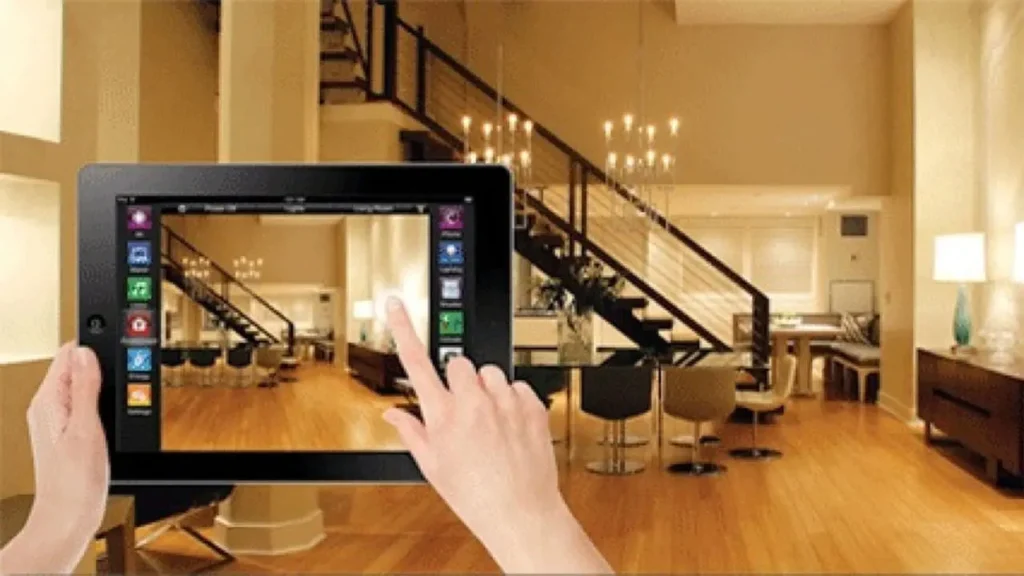Home lighting automation uses smart devices to adjust lights through schedules, apps, and sensors. A smart lighting control system links switches, bulbs, and sensors so you can manage brightness and timing by phone or voice control.
These features support energy savings and improve daily comfort. Home lighting automation also helps with outdoor lights and motion sensors for safer pathways. It provides a simple way to control lighting across your home.
Key Takeaways
• Home lighting automation uses smart switches, bulbs, sensors, and apps to manage lighting through schedules, scenes, and remote control.
• A smart lighting control system improves comfort, safety, and energy savings with automated brightness and color changes.
• Residential lighting control systems range from single-room setups to whole-home platforms.
• System planning involves selecting devices, identifying zones, and choosing retrofit or new construction options.
• Project costs vary, but professional installation ensures safety and long-term reliability.
What Is Home Lighting Automation?
Home lighting automation uses apps, sensors, and smart switches to replace manual lighting control. You can set schedules, adjust brightness, and create scenes based on time of day or activity. Smart home lights connect to voice assistants and remote control apps for simple daily use.
How automated lighting systems work
An automation lighting control system sends commands to smart switches, motion sensors, and light bulbs. These devices dim, brighten, or switch white light levels based on your routines. They can activate outdoor lights at sunset or adjust indoor lighting when you start a task.
Core components of home lighting control
A complete setup includes smart switches, motion sensors, Philips Hue bulbs and platforms like Amazon Alexa or Google Assistant. These tools let you control your lights from anywhere. Tunable white fixtures and accent light options give you more flexibility.
How to Automate Home Lighting
To control your lights with an app or voice control, start with devices that match your space. Smart switches handle regular fixtures, while smart bulbs offer color and brightness control. Wireless lighting systems reduce wiring work and help older homes upgrade faster.
Grounded Electric and Barret Abramow guide homeowners through safe installation and device selection. New Jersey homeowners can also visit electrician Haworth for local service options.
Types of Lighting Control Systems
Residential lighting control systems range from basic single-room setups to full home automation. Each option supports dimming, time-of-day adjustments, and remote control.
Residential lighting control systems
Single-room systems improve comfort and simple light routines. They work well for bedrooms, offices, or small remodels.
Whole-home automation lighting setups
Whole-home systems manage indoor and outdoor lights through one app. They offer stronger reliability and a unified experience.
Home lighting automation apps
Apps let you control your lights remotely and automate routines. They connect smart switches, smart bulbs, and motion sensors into one system.
Best Home Lighting Control Systems
What to compare when choosing
Compare voice control support, smart switch options, sensor compatibility, and app reliability. Look for platforms that control indoor and outdoor lights smoothly.
Leading home automation companies
Lutron, Control4, and Brilliant offer strong long-term performance. Grounded Electric installs these systems with precision. Barrett Abramow manages each project to ensure consistent results.
Lutron, Control4, and Brilliant systems
Lutron provides wired and wireless systems with smooth dimming. Control4 connects lighting with audio, security, and smart home devices. Brilliant uses touchscreen smart switches with motion sensors anda remote control.
Planning a Smart Home Lighting Project
Steps for layout and system design
Plan lighting zones, switch types, smart bulbs, and sensor placement. Barret Abramow helps design layouts that stay simple and safe.
Retrofit vs new construction
Retrofit projects use existing wiring for faster upgrades. New construction lets you build a full smart light system from scratch.
When to hire a licensed electrician
Smart lighting may require wiring changes, panel updates, or backup integration. Grounded Electric, led by Bobby Mulholland, ensures installations follow code and remain safe long term. For early issue detection, review how to tell if you need an electrician to know when a professional should inspect your system.
Home Lighting Automation Cost
Device and equipment costs
Costs depend on the number of smart switches, light bulbs, sensors, and control devices needed.
Labor and installation pricing
Labor varies with wiring complexity, outdoor lights, and system integration. Grounded Electric provides clear estimates. You can also schedule an electrical home safety inspection to confirm your wiring is ready for a new system.
Full project cost range
Small upgrades may cost a few hundred dollars. Whole-home lighting automation can reach several thousand, depending on features and layout.
Real Use Cases and Lighting Ideas
Room-by-room automation examples
Motion sensors improve safety in hallways and bathrooms. Living rooms benefit from accent light scenes. Kitchens use tunable white lighting that adjusts throughout the day.
Outdoor and security lighting ideas
Outdoor lights activate through schedules or motion detection. A remote control helps manage lighting when traveling or arriving late.
Ready to Improve Your Lighting?
If you want safe, reliable, and well-planned smart home lighting, you can schedule a consultation with Grounded Electric. Our team will review your home, recommend the right devices, and ensure your system is installed correctly from start to finish.



